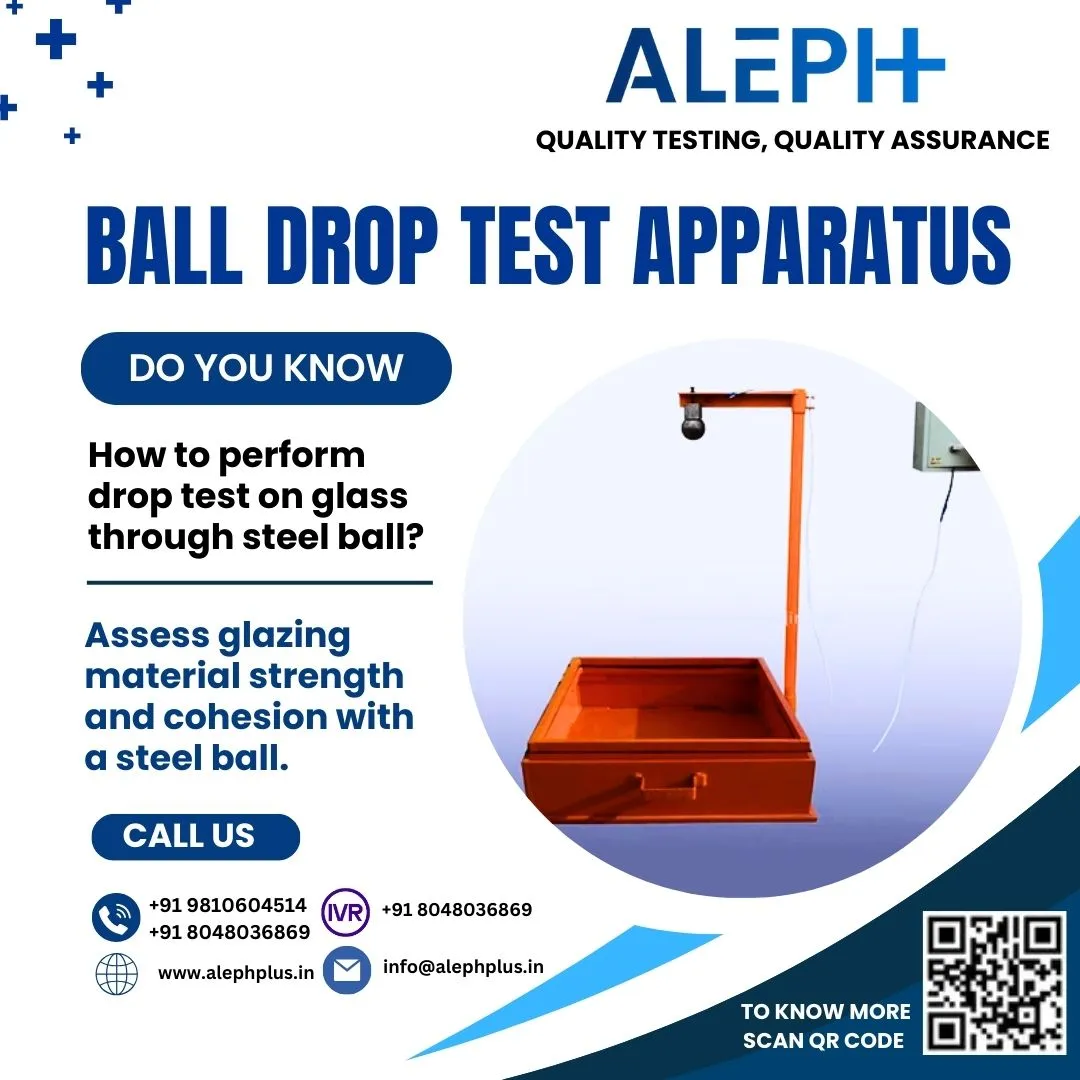
Ball Drop Tester for testing Impact Resistance and Durability of Glass
In the intricate world of glass manufacturing, the ability of glass products to withstand impact is a critical quality parameter. Enter the Ball Drop Tester, a sophisticated tool designed to assess the impact resistance and durability of glass. Let's delve into the world of this essential apparatus, exploring how it ensures the integrity and safety of glass products.
Understanding the Ball Drop Tester: A Glass Guardian
What is the Ball Drop Tester?
The Ball Drop Tester is a specialized instrument widely employed in the glass industry to evaluate the impact resistance of glass products. Its primary function involves dropping a standardized ball onto the surface of the glass under test. This controlled impact simulates real-world scenarios, helping manufacturers gauge how well their glass products can endure impact without breakage.
The Mechanics Behind the Test:
The testing process is both simple and ingenious. A standardized ball, often made of steel, is released from a predetermined height, generating a controlled impact on the glass specimen. The height from which the ball is dropped and the size and weight of the ball are carefully standardized to ensure consistent and reliable test results.
Measuring Impact and Breakage:
Upon impact, the Ball Drop Tester evaluates the glass's ability to absorb and distribute the force. It also assesses whether the glass prevents breakage or shattering upon impact. The results of the test provide valuable insights into the glass's resilience and its suitability for specific applications.
Applications of Ball Drop Tester Across the Glass Industry
1. Architectural Glass: Assessing the impact resistance of glass used in buildings to ensure safety and durability.
2. Automotive Glass: Testing the strength of glass components in vehicles to enhance passenger safety.
3. Consumer Electronics: Ensuring the durability of glass screens and panels in electronic devices to withstand accidental impacts.
4. Beverage and Food Packaging: Verifying the robustness of glass containers to prevent breakage during transportation and handling.
Benefits of Ball Drop Testing
1. Safety Assurance: Ensures that glass products meet safety standards, reducing the risk of injury due to breakage.
2. Quality Control: Manufacturers can identify weaknesses in their glass products and make necessary improvements.
3. Product Reliability: Consumers receive glass items that have undergone rigorous testing, enhancing their trust in the product's durability.
Conclusion
In the dynamic landscape of glass manufacturing, the Ball Drop Tester emerges as a silent sentinel, ensuring that the glass products we encounter daily—from architectural wonders to smartphone screens—meet stringent standards of safety and durability. As we continue to rely on the transparency and versatility of glass, the Ball Drop Tester stands as a guardian, silently validating the resilience of this remarkable material.
